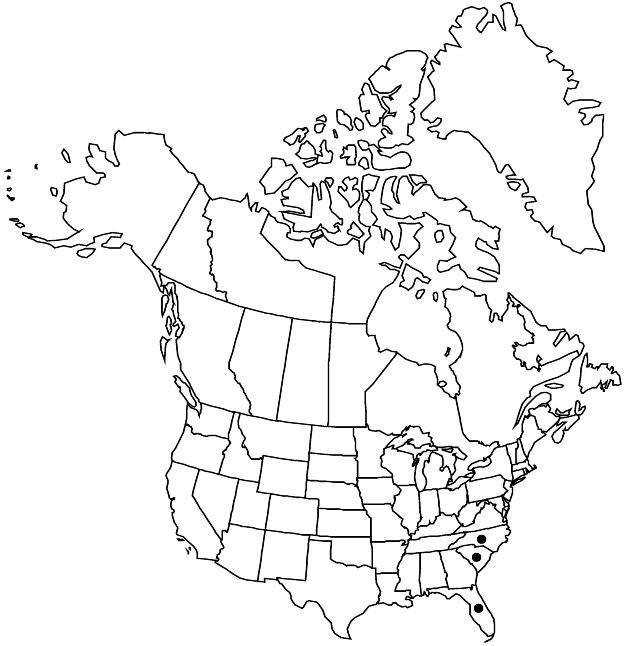Parnassia caroliniana
Fl. Bor.-Amer. 1: 184. 1803.
Herbs with horizontal creeping rhizomes. Stems 20–60 cm. Leaves: basal 1–2 per node on rhizomes; petiole 8–22 cm; blade (of larger leaves) ovate to suborbiculate, 20–75 × 15–70 mm, longer than to ca. as long as wide, base rounded to subcordate, apex obtuse; cauline on proximal 1/2 of stem or absent. Flowers: sepals reflexed in fruit, oblong to oblong-elliptic, 3.5–5 mm, margins hyaline, 0.2 mm wide, entire, apex obtuse; petals 7–12-veined, broadly ovate, 14–20 × 9–12 mm, length 3–4 times sepals, base rounded, margins entire or undulate; stamens 7–11 mm; anthers 1.8–3 mm; staminodes 3-fid almost to base, gland-tipped, 9–14 mm, longer than stamens, apical glands lanceolate, 1–1.7 mm; ovary white. Capsules 10–15 mm.
Phenology: Flowering late summer–fall.
Habitat: Wet pine savannas, seepage slopes, streamhead ecotones, all subject to recurring fires.
Elevation: 10–300 m.
Distribution

Fla., N.C., S.C.
Discussion
Parnassia caroliniana is rare throughout its range; it is listed as endangered in Florida and North Carolina.
Selected References
None.